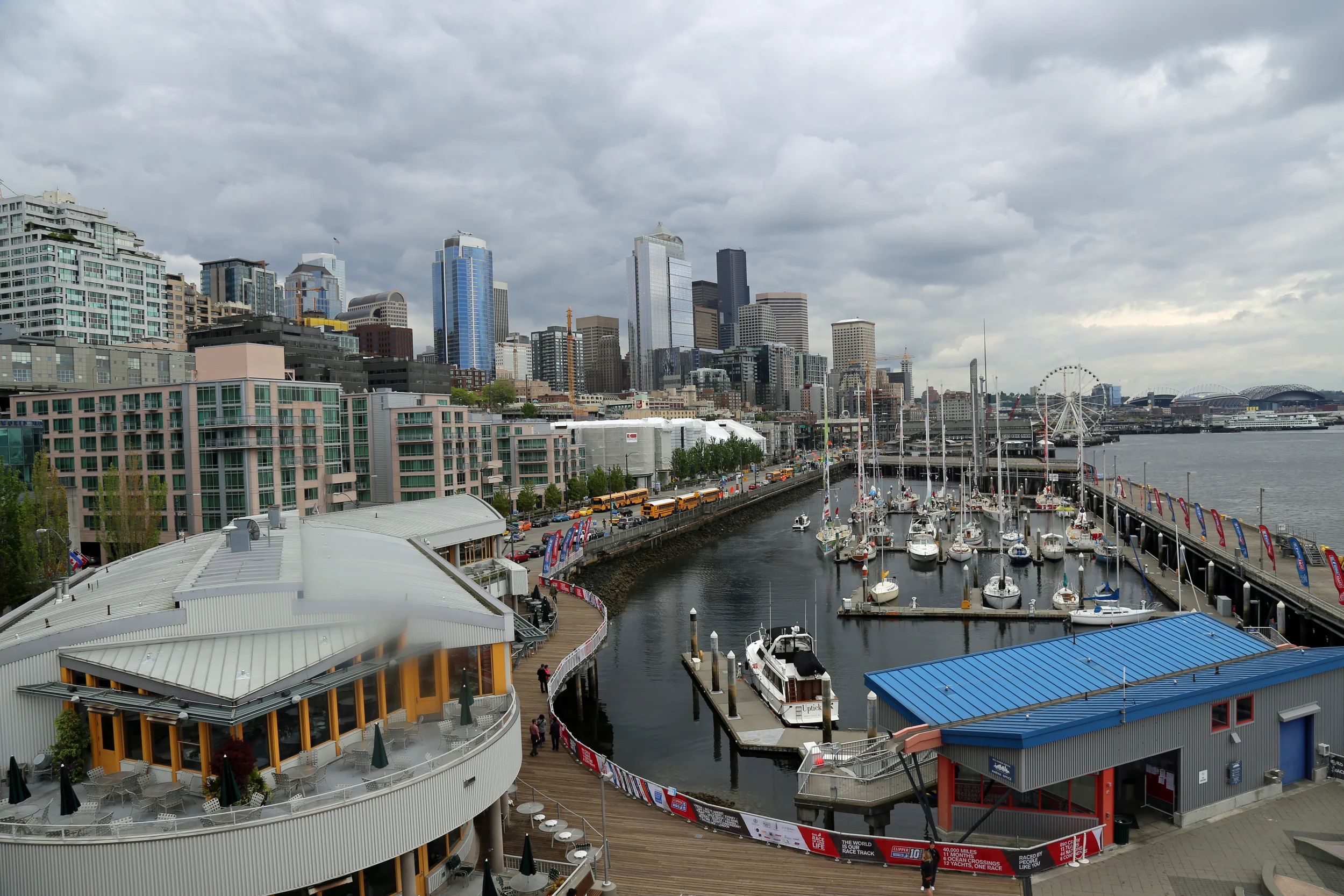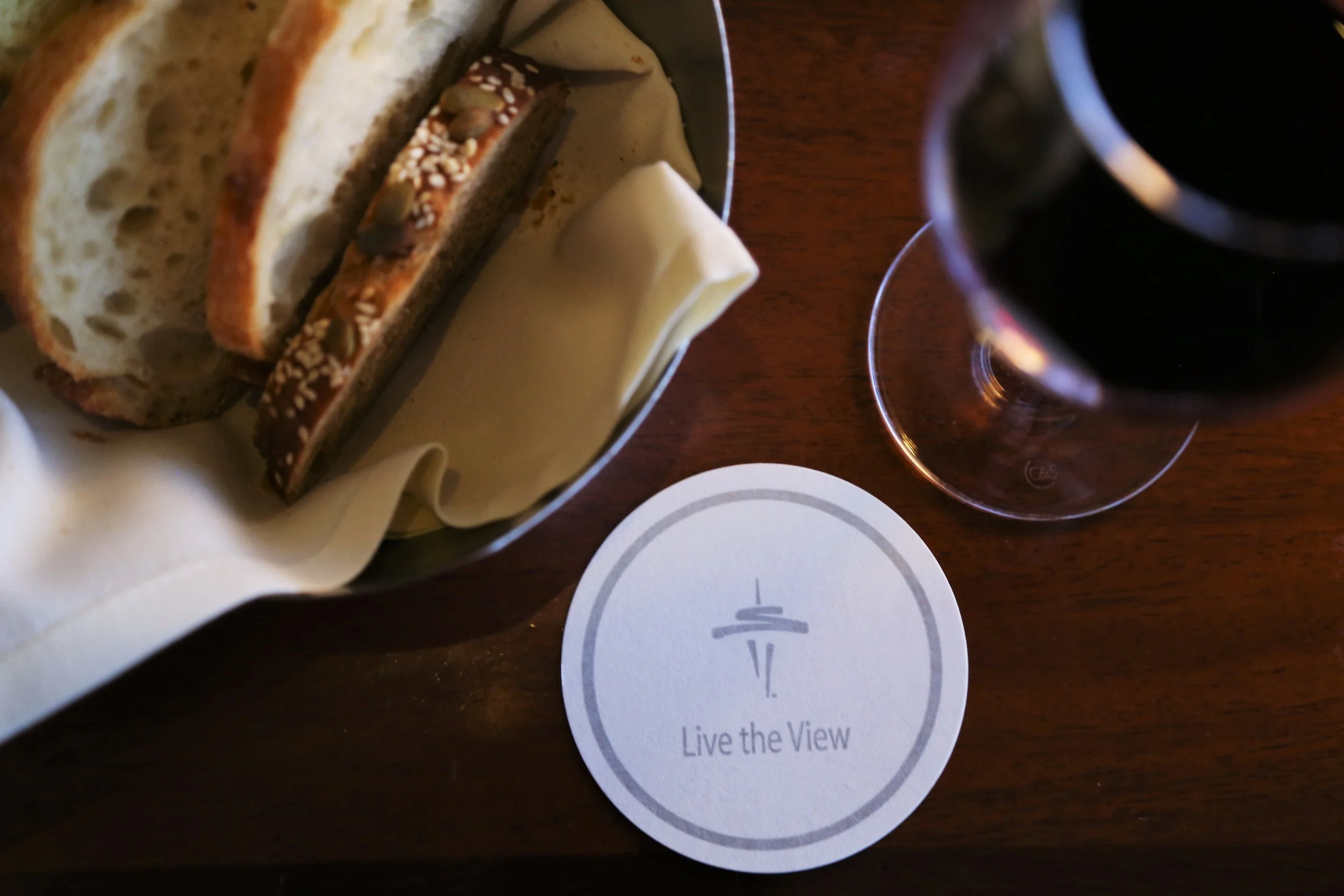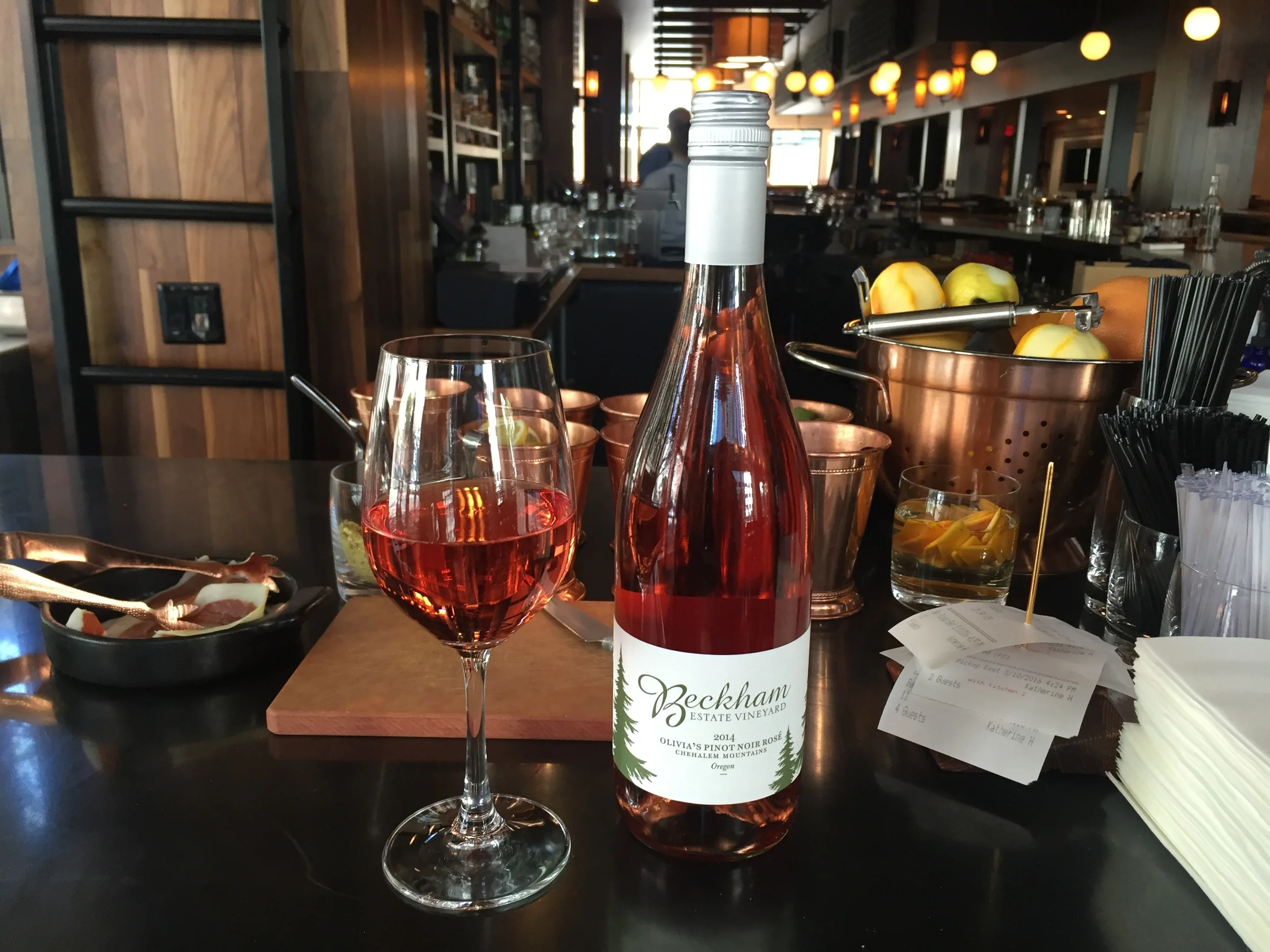Acres of vineyards in Woodinville.
Woodinville is a wonderful little town 30 minutes outside of Seattle. Although Seattle has enough to keep you busy for ages, if you want wine, you have to go to Woodinville. You can visit famous Northwest wineries like Chateau St. Michelle as well as tiny boutique wineries, all which serve up an amazing variety of wines.
As stated elsewhere on this site, we are not wine experts, but this isn't to say we don't love wine — we do. All kinds. No discrimination here. Kristina is known to drink wine others have deemed "bad" with a smile on her face. That being said, if we are going to send you to Woodinville you need to have a basic understanding of wine as well as some advice on the best places to visit, so we brought in our expert, Amy L. Dickson, to give you the lay of the land. Literally.
Q: What are the basic "types" of wine?
That's a big first question! Most of the wine on the world market is dry wine, regardless of if it's red or white. You'll also find fortified wines, dessert wines, and of course, sparkling wines. I could go into so much more detail...over a glass of wine, of course.
Q: Are there "seasons" for wine?
I would say the "seasons" for wine are driven by what you're eating in that season. For instance, Beaujolais wine goes incredibly well with turkey and cranberry dishes, so I drink more of it in the fall. Rosé is just delish with springtime salmon dishes and lightly treated vegetables. Cabernet Sauvignon, the powerhouse of the WA harvest, is like a meal in itself and keeps me warm through the winter months.
Q: What exactly are you supposed to do when someone hands you a glass of wine at a winery and looks at you expectantly?
Say thank you and taste it.
Seriously, what you do with your wine is up to you. Winemakers and tasting room staff know that wine is a subjective experience. Not every wine will appeal to every person. Take the glass and smell it. Note the aromas and bouquets, then give it a little swirl and smell again. Did anything change? Taste it, hold it in your mouth, roll it around a little and see where the primary flavors pop out. Then, if you want to, swallow.
Q: Why the spit buckets? I want to swallow my wine.
Most people do, but some tasters want to taste a large variety of wines in a single day. Aside from exhausting the palate if tasting all day, PNW wines contain a fair amount of alcohol. People spit or dump when they want to enjoy the taste and flavor of a wine without becoming intoxicated. If you encounter a bad wine or one you don't like, it's perfectly acceptable to pour it out.
Q: Dry vs...
Sweet or semi-dry. This is a measure of the residual sugar left in the wine when it goes into the bottle. A wine is considered “dry” when all of the grape sugar is converted to alcohol during fermentation, while a sweet wine still has some residual sugar. “Semi-dry” or “off dry” wines may appear mildly sweet to the taster.
Q: Is wine organic? Is it vegetarian?
Wine is made from grapes, and like any other fruit or vegetable, it can be grown organically, so winemakers can make organic wine. This is a decision made in the vineyards. Same thing about wine being vegetarian, only this decision is made in the winemaking process. It's not uncommon for winemakers to use fining agents that remove proteins and impurities from the wine. Popular animal-derived fining agents used include blood and bone marrow, casein (milk protein), egg albumen, fish oil, gelatin, and isinglass (gelatin from fish bladder membranes). Yum!
Q: Also, what's the deal with sulfites?
Sulfites are used to keep wine "fresh" so to speak and are added during winemaking. By law, the addition of sulfites is stated on most bottles because there are a very few people with strong sulfite allergies. But don't worry: The amount of sulfites found in dry red wine is a tiny fraction of what you'd find in dried fruit or even french fries.
Q: Why are there different size and shape wine glasses? Which do you use and when?
Wine glasses are designed to help you get the most out of your wine tasting experience. The shape of the glass helps deliver a consistent aroma. So many glasses because, well, there are a lot of different types of wine out there! Seattle wine pro/sommelier/personal hero Madeline Puckette offers a great video resource on her website, Wine Folly. Check it out!
Q. What's the point of smelling the cork and should I ask to do this?
Smelling a cork helps you detect wine cork taint known as Trichloroanisole (TCA). But if this has happened to the bottle, you'll smell it in the wine too (musty, wet dog smell). Skip the cork and start with your wine. If you suspect TCA taint, then inspect the cork, but only if you want to.
Q. How long does wine last once open?
This varies depending on the type of wine and how it's stored. Some fortified wines can be fine for weeks once opened! But if it's a glass bottle of wine, bank on 3-5 days. Put your resealed red wine someplace cool and dark and your resealed white wine in the fridge.
Q. What does it mean when someone says the wine has "nice legs?"
This is a measure of glycerin in the wine, an indicator of alcohol or sugar in your wine. More or heavier "legs" just means your sweet, alcoholic drink might give you a case of the "wine flu" tomorrow. It's not a measure of quality.
Q. When wine tasting, what type of wine do you start and end with and why?
Most wineries pour light to dark. Here in Woodinville you don't often get sparkling wines, so you'll likely encounter light whites and rosé wines first, then move through to light/medium/heavy reds.
Q. What's your favorite Seattle area or Woodinville winery that is good for beginners?
Walking around the Warehouse District in Woodinville is a great place to start, especially in the fall during harvest and crush. Many of these winemakers will be making their next vintages right there in the backs of the buildings. You can even volunteer to help!
At last count Woodinville sported 108 tasting rooms, so it's tough for me to pick a favorite. They are all my children. Salud!
Tasting at Sparkman Cellars.
Aging wine in barrels.
Adams Bench Winery
Amy L. Dickson is a communications professional, freelance writer, and contributor to Rain or Shine Guides. She’s currently training at the NW Wine Academy for her Level 1 sommelier certification. Follow her at @amyldickson75
Photos by Amy L. Dickson and Sarah Mathews












